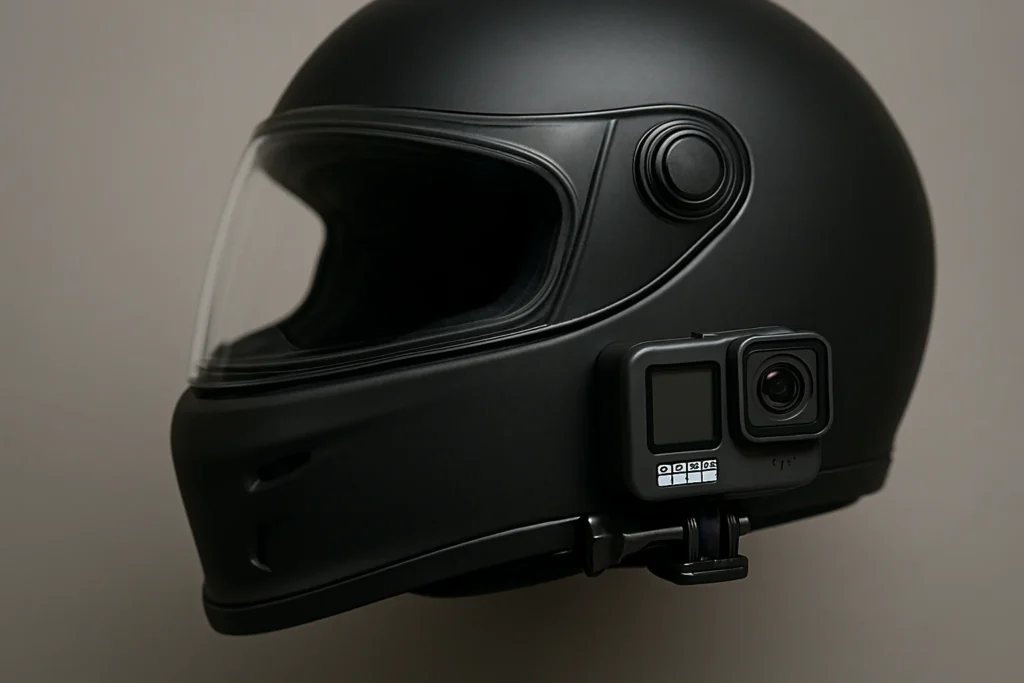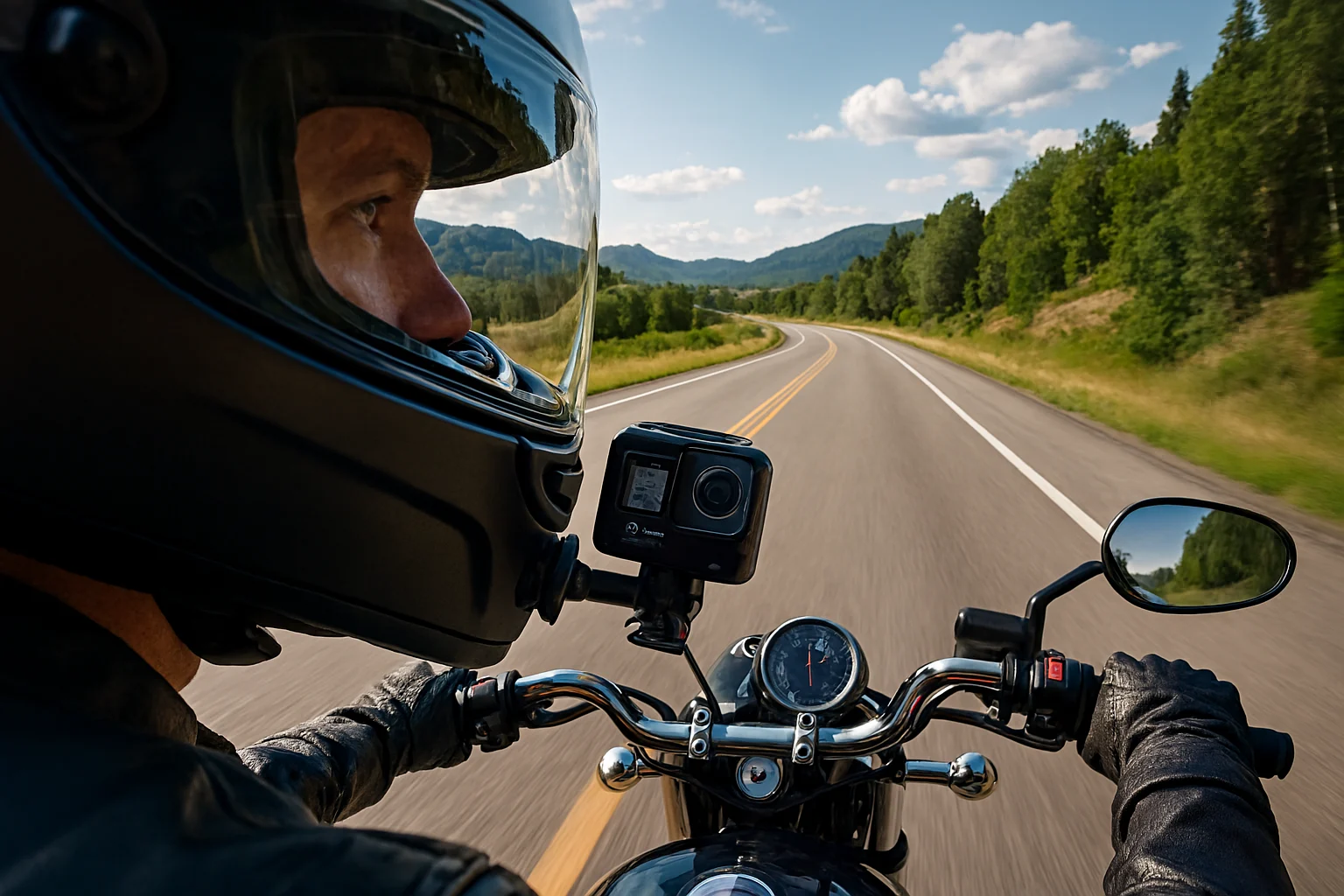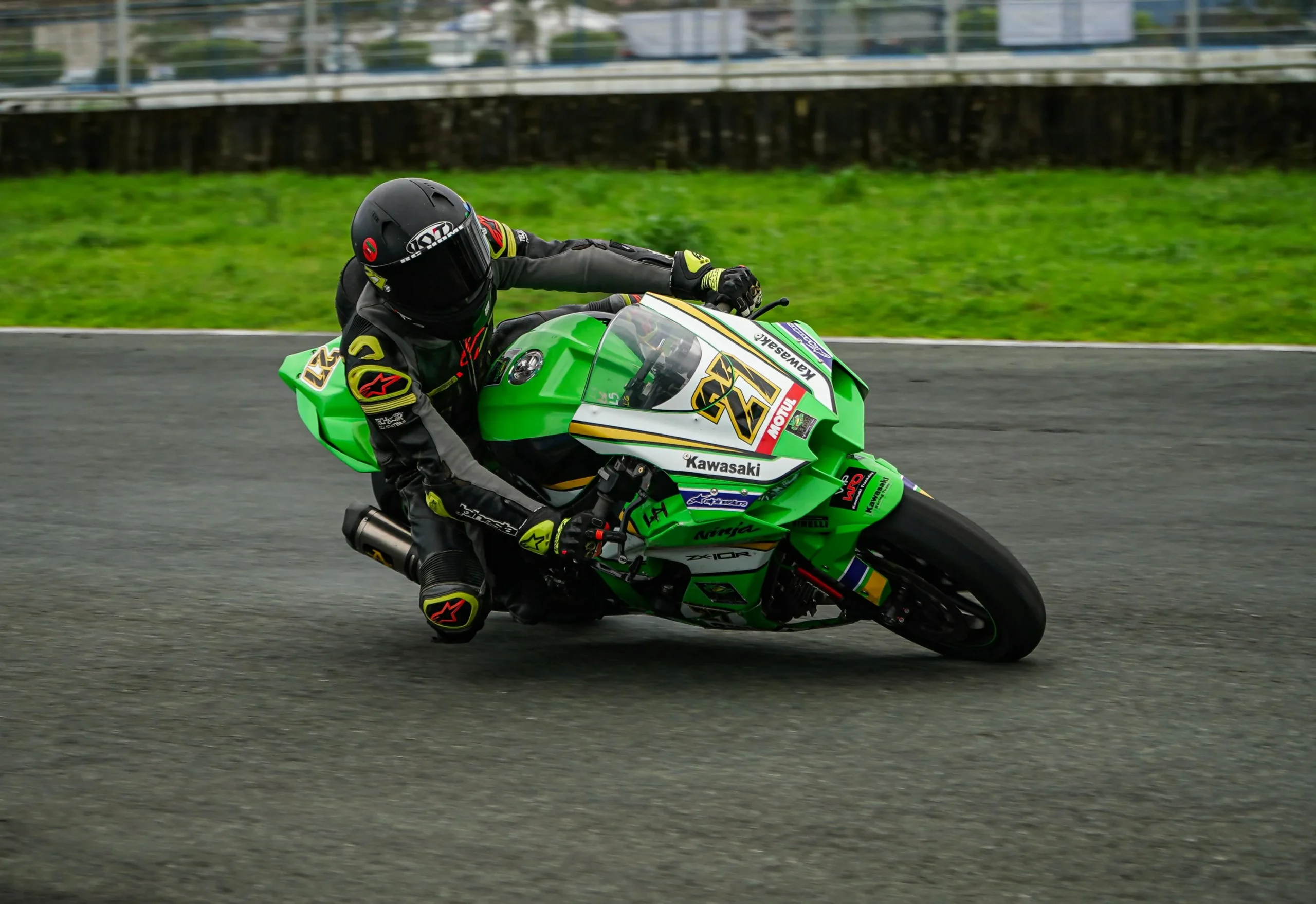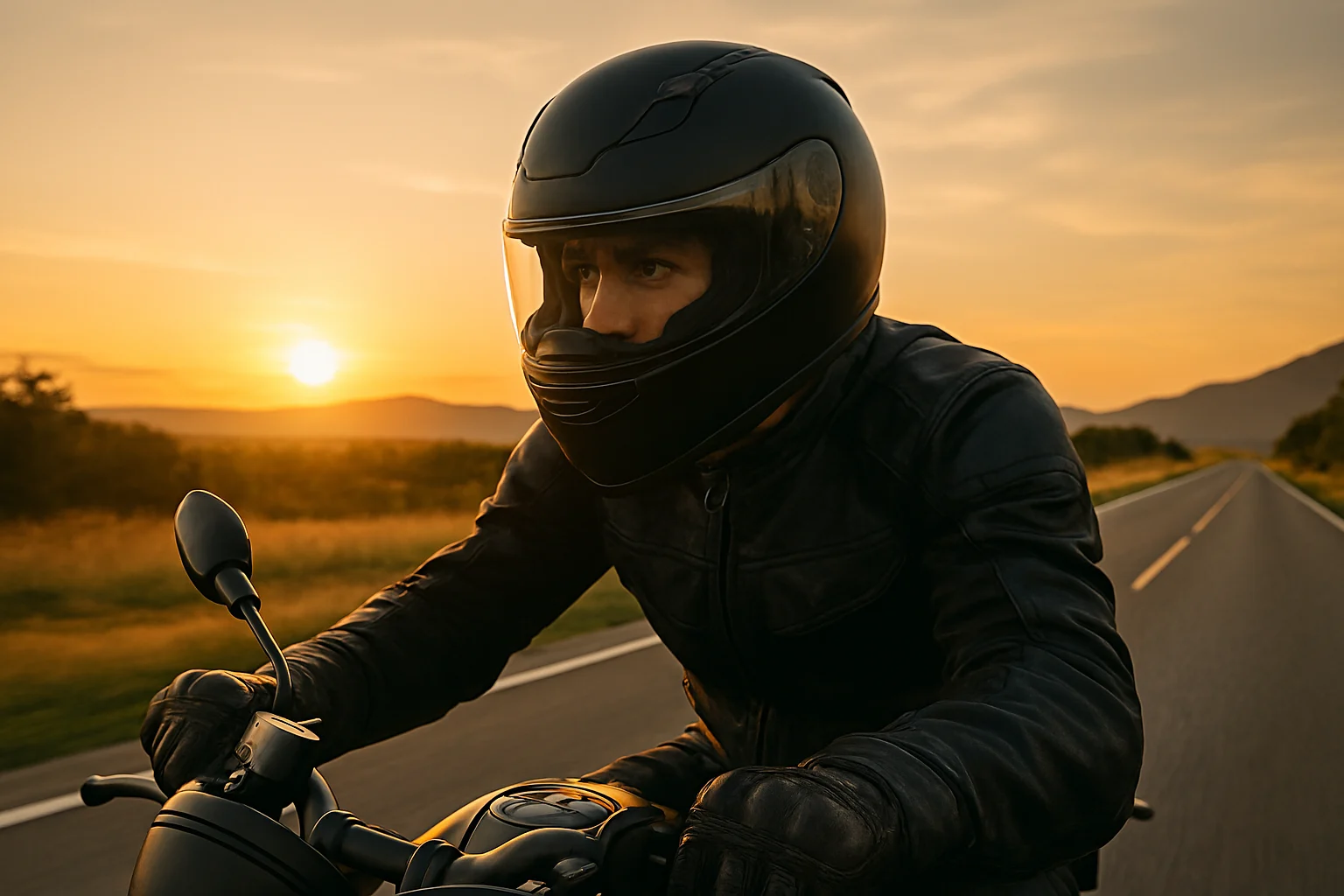When I first started riding, one of the first accessories I bought was a GoPro. I loved the idea of recording my rides, sharing them with friends, and keeping a record in case something went wrong on the road. But like many bikers, I quickly ran into a big question: Are GoPros illegal on motorcycle helmets?
At first, I thought the answer would be simple. Either it’s allowed or it’s not. But once I dug deeper, I realized the laws around helmet-mounted cameras are far more complicated than they appear. Between DOT helmet safety standards, state-specific rules, and rider safety concerns, I had to do a lot of research to figure out the safest and most legal way to mount my GoPro.
In this guide, I’ll walk you through what I learned. I’ll break it down in plain English, share my own experience, and explain how this affects us as bikers. If you’ve ever wanted to mount a GoPro on your helmet, this roadmap will help you do it the right way. Curious if Ruroc helmets are worth it? Explore Is Ruroc a good brand and find out from a fellow rider’s honest review.
Why Riders Love GoPros on Helmets
Before diving into the legal details, let’s talk about why bikers use helmet cameras in the first place. For me, there were three main reasons:

- Memories and Adventure
Every ride is a story. From mountain passes to cross-country trips, a GoPro captures those moments exactly how we see them. Watching the footage later feels like reliving the ride. - Learning and Improving Skills
Reviewing my footage helped me notice things I missed during the ride. For example, I spotted late braking habits and sloppy corner entries that I could correct next time. - Safety and Evidence
Unfortunately, motorcycle accidents are common. Having a helmet camera provides valuable proof in case of disputes or accidents. It can protect us from false claims.
So yes, a GoPro on a helmet is more than just a cool toy. It’s a tool for safety, self-improvement, and storytelling. But as I quickly found out, it also comes with legal challenges. Wondering about Ruroc safety? Dive into Are Ruroc helmets safe for real-world insights you can trust.
The Legal Grey Area: Are GoPros Illegal on Motorcycle Helmets?
Here’s the straight answer:
- No federal law in the United States bans helmet cameras.
- But state laws vary.
For example:
- California is the strictest. They follow the DOT’s “rigid projection” rule very seriously. According to the DOT standard, any projection on a helmet cannot extend beyond 5 millimeters. That means even a small GoPro mount may make your helmet technically illegal. Riders in California risk fines up to $250 if caught.
- Florida, on the other hand, has no specific helmet camera restrictions. You can mount your GoPro without fear of breaking the law.
The result is a patchwork of rules across states. What’s legal in one place might be frowned upon in another. And to make things trickier, enforcement often depends on the interpretation of individual officers.
When I traveled from Florida to California with my bike, I had to change my setup completely. In Florida, I rode with a chin-mounted GoPro without issue. But in California, I switched to a handlebar mount to avoid the risk of fines. Shopping for a helmet? Get smart about spending with How much is a motorcycle helmet, no surprises, just budget clarity.
Why Helmet Cameras Are Controversial
You might be wondering why such a small camera mount causes so much debate. After all, helmets already have vents, visors, and aerodynamic spoilers.
The controversy comes from safety standards. The DOT’s Federal Motor Vehicle Safety Standard 218 clearly says:
- Helmets must not have rigid projections more than 5mm (0.20 inches).
- The reason is safety. Protruding objects can create snag points. If your helmet catches on something during a crash, it could cause serious neck injuries or compromise the helmet’s protective function.
There are also cases where helmet accessories broke during crashes, weakening the helmet shell. Safety experts argue that even adhesive mounts can affect impact performance.
This leaves riders in a tough spot. We want to film safely, but we also don’t want to risk voiding our helmet’s DOT certification or creating new hazards. Thinking of Bluetooth convenience? Read Are Bluetooth motorcycle helmets legal before making your next helmet upgrade.
Key Rules for Mounting a GoPro Legally
Based on my research and experience, here are the core guidelines every rider should follow:
1. Avoid Permanent Modifications
Never drill holes or screw mounts directly into your helmet. This instantly compromises the helmet’s structure and makes it non-compliant.
2. Use Adhesive Mounts
High-quality adhesive mounts stick securely without altering the helmet shell. They’re also considered less risky under DOT standards since they can flex or break away on impact.
3. Position Carefully
The mount shouldn’t block your vision, strain your neck, or stick out excessively. A low-profile setup is both safer and more aerodynamic.
4. Choose Durable Options
Not all mounts are created equal. Cheap mounts may fall off at highway speeds or in the rain. Invest in well-reviewed products designed specifically for motorcycle helmets.
5. Consider Removability
Quick-release or strap systems let you switch between helmets or remove the camera when needed. This is useful if you ride in states with stricter enforcement.
My Top 5 Legal GoPro Mounting Options
Here are the five setups I’ve tried that balance legality, safety, and great footage.
1. Chin Mount
This is my personal favorite. A flat adhesive chin mount gives you the perfect rider’s-eye perspective without blocking your view. It’s stable, aerodynamic, and keeps your footage immersive.
2. Side Mount
Mounting on the left or right side works well too. It gives easy access to the GoPro buttons and captures an interesting angle. Just make sure to place it in a way that doesn’t increase wind drag.
3. Top Mount
Popular among vloggers, but you have to be careful with protrusion limits. A streamlined curved adhesive mount keeps you closer to compliance. I only use this setup outside of California.
4. Strap Mount
These mounts wrap around the helmet with straps instead of adhesives. They’re totally removable and don’t affect the helmet’s shell at all. Great for riders who swap helmets often.
5. Handlebar Mount
If in doubt, skip the helmet altogether. Mounting your GoPro on your handlebar gives smooth, wide-angle shots. With modern stabilization features, the footage looks professional, and you don’t have to worry about helmet law enforcement.
How This Impacts Everyday Riders
When I first learned about these rules, I was frustrated. Why should a tiny GoPro mount be such a big deal? But over time, I realized the value of understanding the laws.
- On one trip, a friend of mine in California got pulled over and fined for a helmet GoPro. That was enough proof that enforcement is real.
- In Florida, I’ve never had an issue. My chin mount has been with me for thousands of miles.
The lesson is clear: always check your state’s motorcycle helmet camera laws before hitting the road. Even if you think no one will notice, one officer having a bad day could cost you.
Safety vs Freedom: The Rider’s Dilemma
This issue highlights the balance we bikers constantly deal with. On one hand, we value freedom, adventure, and capturing our rides. On the other, we need to stay safe and respect regulations.
For me, the compromise has been simple:
- Use adhesive chin mounts in lenient states.
- Switch to handlebar mounts in strict states.
- Never drill, screw, or make permanent modifications.
This way, I still get to record every adventure without worrying about legal trouble or sacrificing my safety. Uncertain about helmet lifespan? Discover how long your helmet should last in How long are motorcycle helmets good for you.
Final Thoughts
So, are GoPros illegal on motorcycle helmets?
- No federal law bans them.
- But state laws vary, and California is the strictest.
- DOT rules limit helmet protrusions to 5mm, making many helmet mounts technically non-compliant.
The good news is that there are legal, safe, and practical mounting solutions. Chin mounts, side mounts, strap mounts, and handlebar mounts all give you options without breaking the rules.
For bikers like us, a GoPro is more than a camera. It’s a companion, a recorder of memories, and sometimes even a silent witness in case of accidents. By understanding the legal landscape, we can keep filming our rides while staying safe and compliant.
When I look back at my footage, I’m glad I took the time to learn the laws. It lets me ride freely, knowing I can enjoy my GoPro without unexpected surprises. Need top helmet recommendations? Check out What are good motorcycle helmets for gear that blends safety and style.





